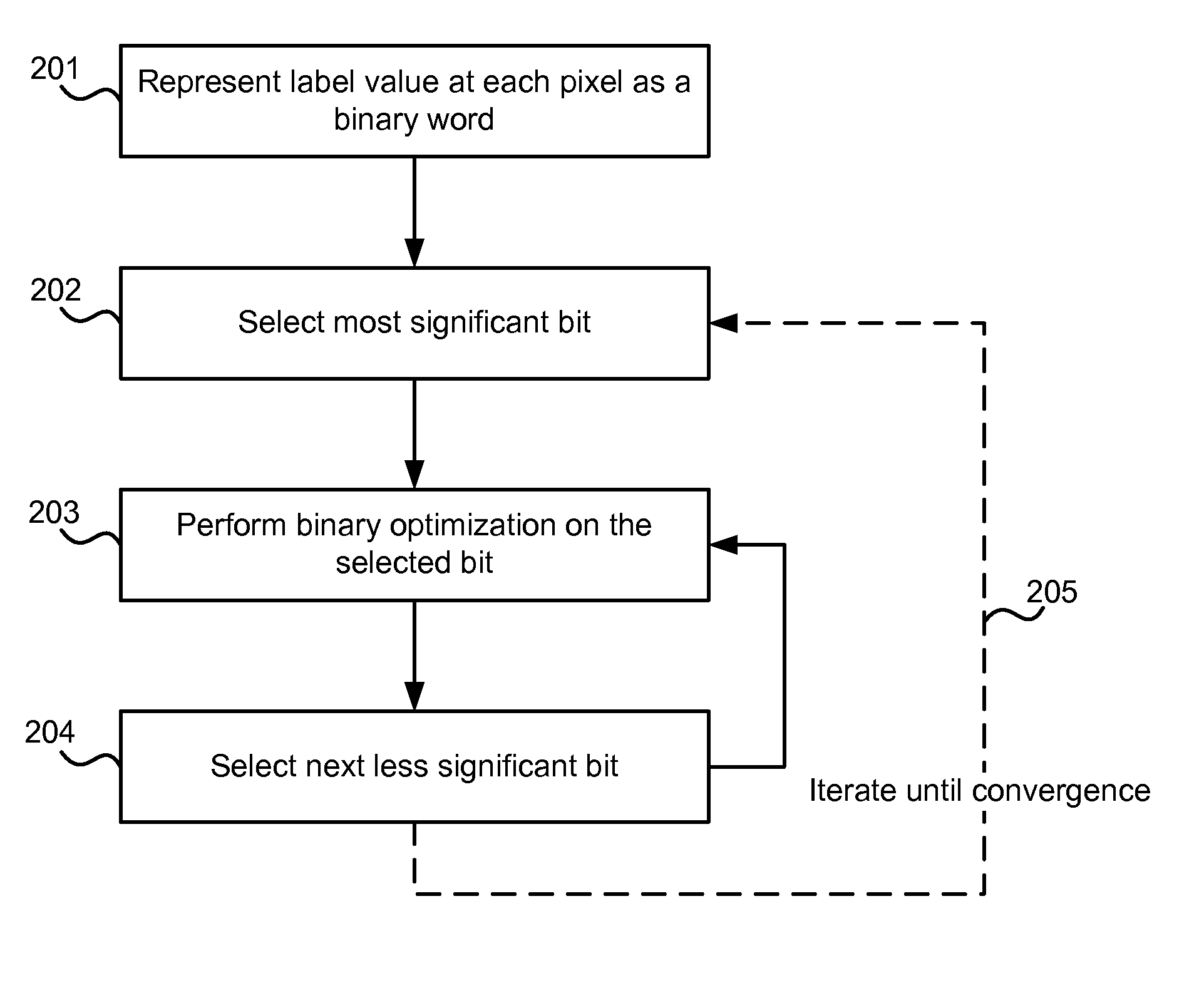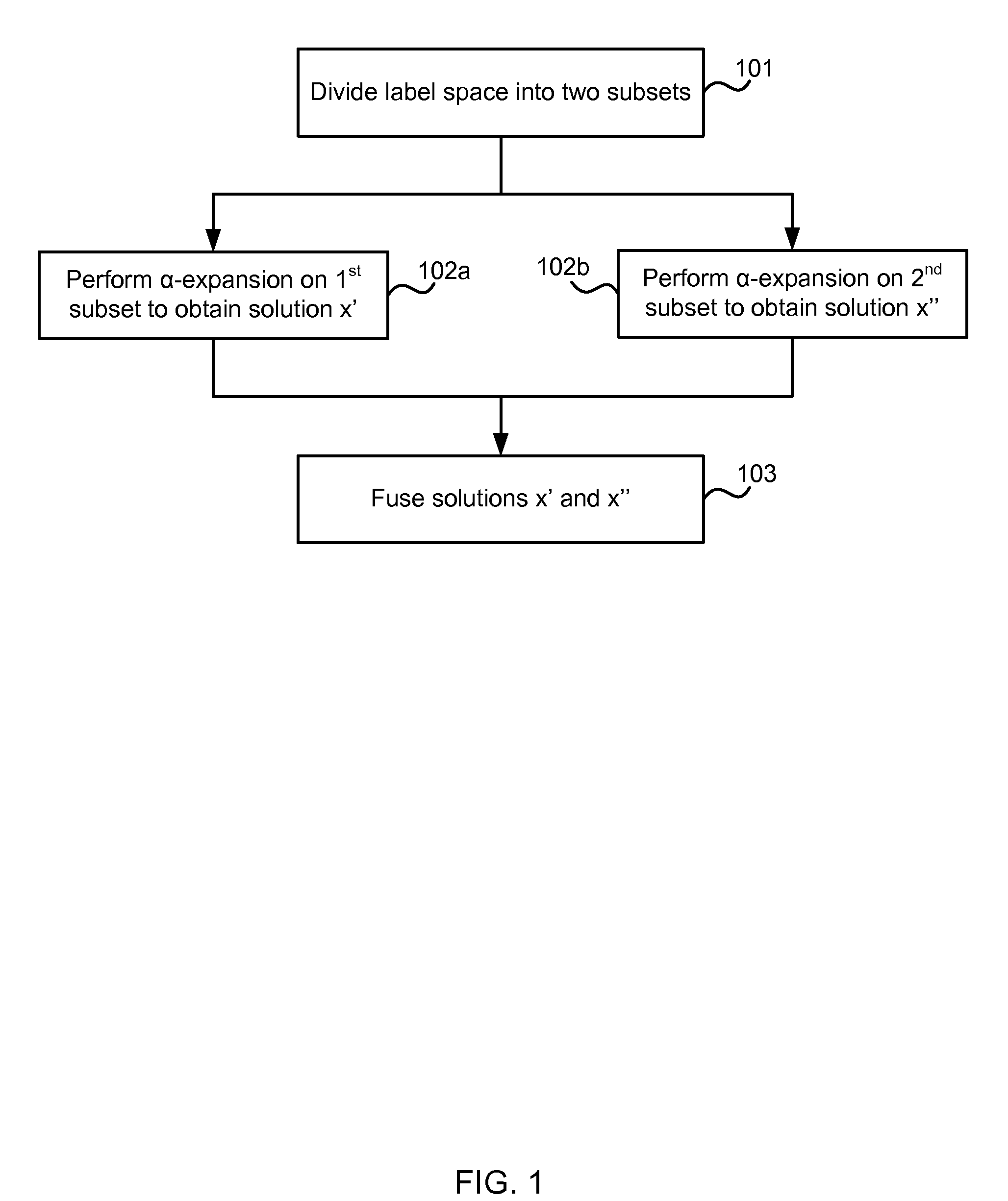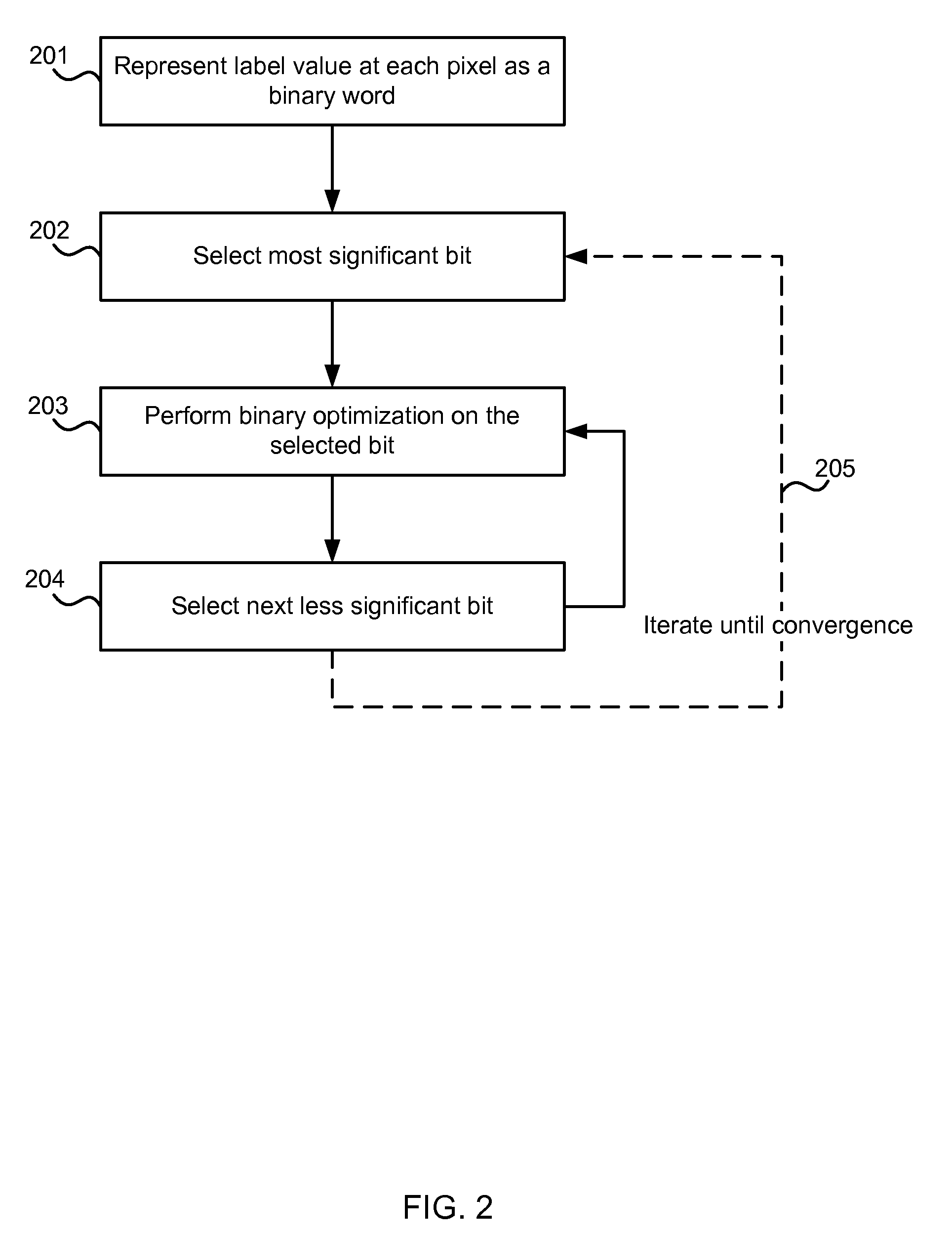Optimization of multi-label problems in computer vision
a multi-label, computer vision technology, applied in the field of optimization of multi-label problems in computer vision, can solve the problem that the -expansion does not scale well for large numbers of labels
- Summary
- Abstract
- Description
- Claims
- Application Information
AI Technical Summary
Benefits of technology
Problems solved by technology
Method used
Image
Examples
Embodiment Construction
The detailed description provided below in connection with the appended drawings is intended as a description of the present examples and is not intended to represent the only forms in which the present example may be constructed or utilized. The description sets forth the functions of the example and the sequence of steps for constructing and operating the example. However, the same or equivalent functions and sequences may be accomplished by different examples.
Most early vision problems can be formulated in terms of Markov random fields (MRFs) and therefore algorithms for MRF inference are very important for computer vision. The MAP-MRF approach (computing maximum a posteriori configurations in an MRF) has proven to be extremely successful for many vision applications such as stereo, image segmentation, image denoising, superresolution, new view synthesis and others. A special class of MRFs are binary MRFs.
The problem of minimizing an energy function of the following form can be c...
PUM
 Login to View More
Login to View More Abstract
Description
Claims
Application Information
 Login to View More
Login to View More - R&D
- Intellectual Property
- Life Sciences
- Materials
- Tech Scout
- Unparalleled Data Quality
- Higher Quality Content
- 60% Fewer Hallucinations
Browse by: Latest US Patents, China's latest patents, Technical Efficacy Thesaurus, Application Domain, Technology Topic, Popular Technical Reports.
© 2025 PatSnap. All rights reserved.Legal|Privacy policy|Modern Slavery Act Transparency Statement|Sitemap|About US| Contact US: help@patsnap.com



